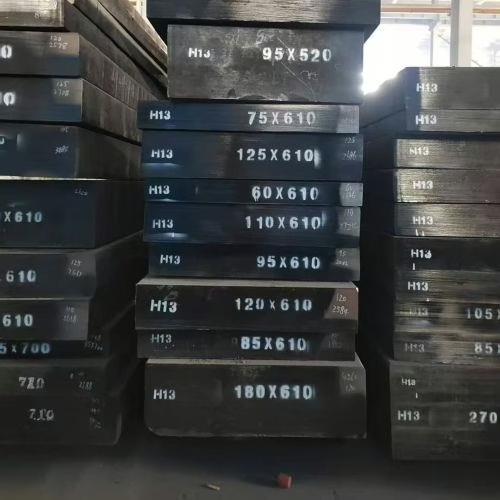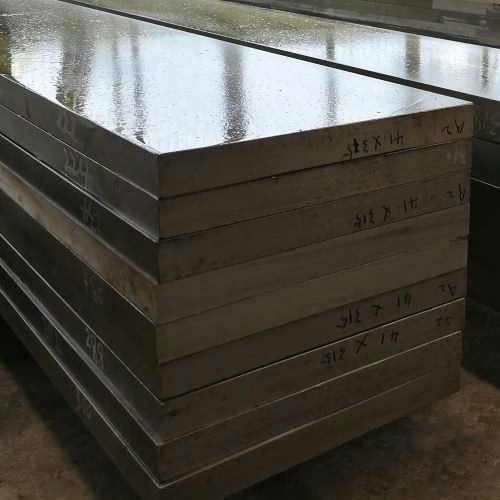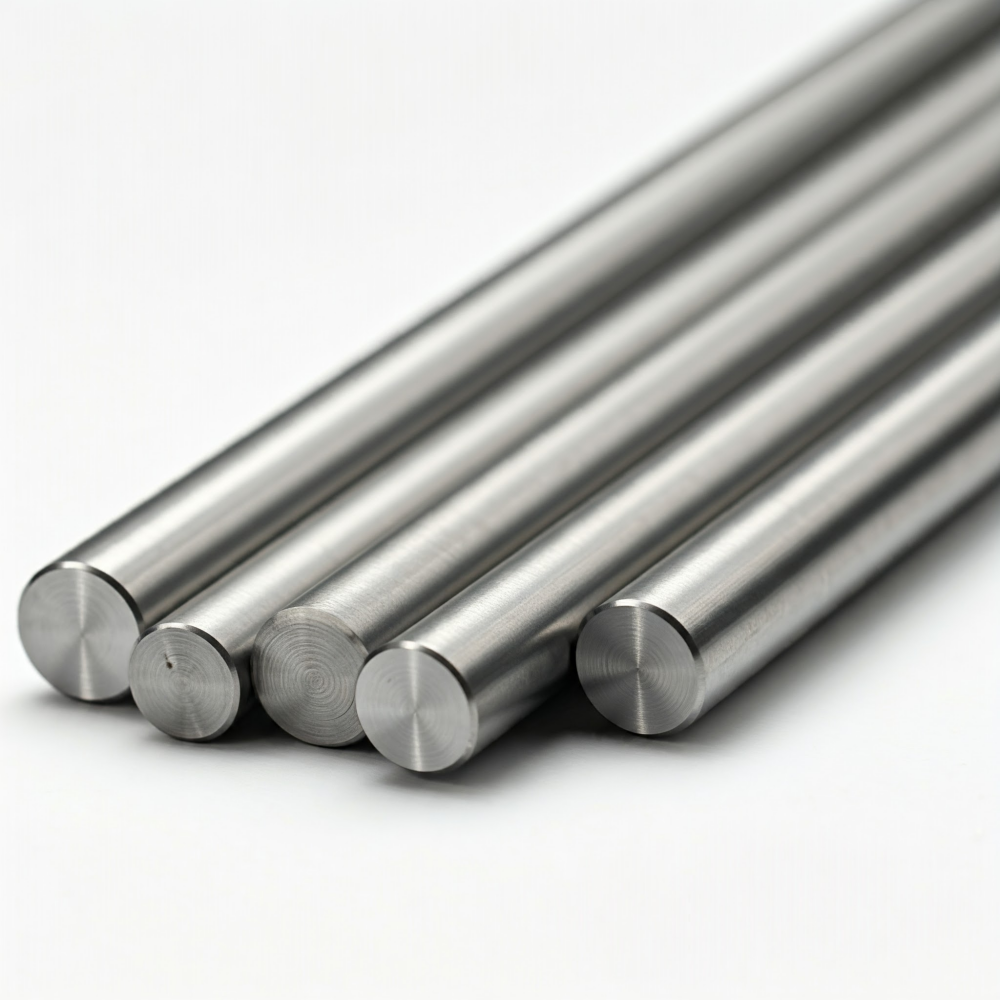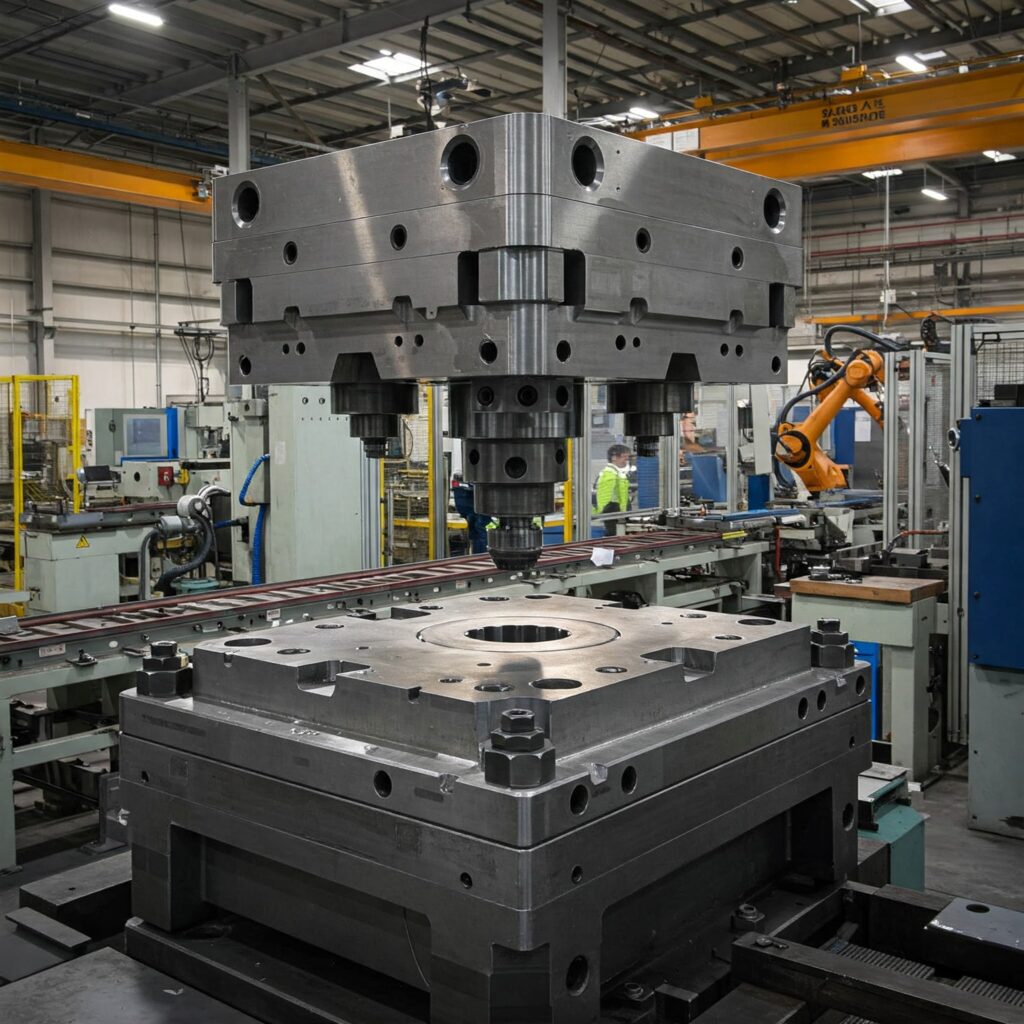الوقت المقدر للقراءة: 7 دقائق
النقاط الرئيسية
- H13 vs A2 tool steel highlights two different types of tool steels: H13 is a hot-work steel, while A2 is a cold-work steel.
- H13 performs well at high temperatures, up to 700°C, whereas A2 operates best below 200°C.
- H13 excels in toughness but has lower wear resistance, while A2 has greater wear resistance but reduced toughness.
- Heat treatment affects both steels; H13 requires multiple tempering cycles for optimal performance, while A2 is typically tempered at lower temperatures.
- Applications differ significantly: H13 is used for die-casting and forging, while A2 is favored for mass production and cold-forming dies.
جدول المحتويات
H13 vs A2 tool steel: What is the difference between ح13 و أ2 steel? In modern manufacturing, tool steel is an indispensable core material as a specialized, high-quality steel. Tool steel maintains its cutting and forming capabilities at extreme temperatures after quenching and tempering. When our customers select materials for complex operating conditions, we typically recommend evaluating them across three core dimensions, which constitute the three critical factors of tool steel performance: wear resistance, toughness, and hot hardness.
Within the AISI (American Iron and Steel Institute) standard system, H13 and A2 are two highly representative foundational steel grades, yet their application scenarios are entirely distinct. H13 (1.2344), as a فولاذ أداة العمل الساخن, is primarily used in high-temperature environments. It exhibits outstanding resistance to thermal fatigue and is widely employed in die-casting molds. Conversely, A2 is an air-hardening فولاذ الأدوات للعمل البارد, designed for conditions at room temperature.


Defining the Operational Environment: Hot Work vs. Cold Work
In selecting tool and die steels, H13 and A2 are often used as typical reference points. The most fundamental difference between H13 and A2 lies in their operating temperatures. H13 maintains its strength at high temperatures, withstanding instantaneous temperatures up to 700°C (1300°F). Of course, H13 also has a temperature limit. Beyond 650°C (1138°F), the strength of H13 material begins to decline. To extend the material’s service life, it is recommended to use higher-purity ESR (Electroslag Remelting) H13 material. A2, on the other hand, is only suitable for ambient temperature environments, with typical operating temperatures below 200°C (400-500°F).
Composition and Mechanical Property Comparison
| رمز | H13 Tool Steel(%) | فولاذ الأدوات A2 (%) |
| ج | 0.32 – 0.45 | 0.95 – 1.05 |
| كر | 4.75 – 5.50 | 4.75 – 5.50 |
| شهر | 1.10 – 1.75 | 0.90 – 1.40 |
| الخامس | 0.80 – 1.20 | 0.15 – 0.50 |
| سي | 0.80 – 1.20 | 0.50 (الحد الأقصى) |
| من | 0.20 – 0.50 | 1.00 (الحد الأقصى) |
| ص | 0.03 (الحد الأقصى) | 0.03 (الحد الأقصى) |
| س | 0.03 (الحد الأقصى) | 0.03 (الحد الأقصى) |
In the world of tool steels, no single material is perfect. Material selection is fundamentally a trade-off between three core properties: wear resistance, toughness, and hot hardness.
- Toughness. On a toughness rating scale of 1-9 (lowest to highest), H13 rates 9 while A2 rates 5. If your tooling must withstand severe impacts or operate under complex stresses, toughness is the primary consideration. H13 has a lower carbon content and typically achieves a hardness of 40-50 HRC. The low carbon content minimizes the formation of unsolved carbides, thereby enhancing H13’s impact resistance. In contrast, A2 exhibits moderate toughness. To meet hardness requirements in cold-working applications, A2 increases its carbon and carbide content, boosting its hardness but partially reducing its toughness.
- Wear Resistance. On a wear resistance rating scale of 1-9 (lowest to highest), H13 is rated 3, while A2 is rated 6. Wear resistance typically correlates directly with carbon content and the quantity of hard carbide particles in the steel. A2 contains higher carbon. This high carbon content forms abundant hard carbides, giving it significantly superior room-temperature wear resistance compared to H13. Due to its lower carbon content, H13 lacks sufficiently large primary carbide particles to resist abrasive wear. While its vanadium content provides some assistance, it cannot compete with cold-worked steel in a pure wear resistance comparison.
- Red hardness. On the red hardness rating scale of 1-9 (lowest to highest), H13 is rated 6, and A2 is rated 5. While ordinary steel rapidly softens and deforms above 500–550°C, H13 maintains high hardness and strength even at elevated temperatures. A2 lacks the alloying elements necessary to resist high-temperature softening, limiting its application to cold-working environments.
Heat Treatment and Manufacturing Characteristics
Material selection is only the first step; the ultimate performance of tools and dies is often determined by the heat treatment process. Both H13 and A2 are air-hardening, deep-hardening steels that harden by air cooling. Compared to oil or water quenching, air hardening induces minimal thermal stress and poses the lowest risk of deformation. According to some data sources, H13 and A2 exhibit extremely minimal dimensional expansion after proper heat treatment, approximately 0.001 mm/mm.
During tempering, the processes for H13 and A2 steel differ significantly. H13 is a secondary hardening steel, and it is recommended to perform at least two tempering cycles, or even triple tempering. Multiple tempering cycles not only relieve residual stresses but also promote carbide precipitation, resulting in exceptional red hardness and thermal fatigue resistance. A2 steel exhibits a secondary hardening peak around 510°C. However, in cold-working applications, high-temperature resistance is typically unnecessary; instead, sufficient hardness and wear resistance are required. In practice, to achieve high hardness in A2 steel, a lower tempering temperature of 230°C is commonly employed. High-temperature tempering is considered only when extremely high toughness is required or to eliminate retained الأوستينيت.
In terms of machinability, with 1% carbon tool steel set as the 100-point benchmark, H13 in the مُلَدَّن state has a machinability score of approximately 70 points. Similarly, the A2 score in the annealed state is about 60 points. Machining accounts for a significant portion of tool-and-die manufacturing costs. Therefore, machinability is a critical factor that cannot be overlooked.
التطبيقات
- تطبيقات فولاذ الأدوات H13يُستخدم على نطاق واسع في تطبيقات العمل الساخن العامة، وقوالب الصب (للألومنيوم والزنك والمغنيسيوم)، وقوالب حقن البلاستيك، وأدوات التشكيل. وهو مناسب لقوالب البثق الساخن للألومنيوم والمغنيسيوم والفولاذ والنحاس والنحاس الأصفر. كما يُستخدم في المثاقب والثاقبات واللحامات للعمل الساخن. يمكن استخدامه كفولاذ قوالب للتجاويف المخرطة، ويُوصى به لقوالب البلاستيك المصقولة جيدًا بعد تكرير ESR، ويُستخدم أحيانًا للأجزاء الهيكلية شديدة الإجهاد في صناعة الطيران نظرًا لمقاومته للتليين في درجات الحرارة المرتفعة ومتانته المعتدلة.
- A2 Tool Steel: A general-purpose air-hardening tool steel with a wide range of tooling applications. Commonly used for blanking and piercing dies in mass production. Also used for cold-forming dies, coining dies, drawing and lamination dies, thread-rolling dies, shear and slitter blades, and forming rolls. It’s a good choice for intermediate-service cold-work tools and dies. It can be used for small molds and inserts, and is preferred for large dies due to low distortion during المعالجة الحرارية. Sometimes used as an alternative to hot-work steels for hot shearing tools and dies used in the hot extrusion of zinc.
ملخص المقارنة
| مميزة | فولاذ الأدوات H13 | فولاذ الأدوات A2 |
| التطبيق الأساسي | تطبيقات العمل الساخن (على سبيل المثال، الصب بالقالب، والتزوير، والبثق). | تطبيقات العمل البارد (على سبيل المثال، القطع، التشكيل، الرسم). |
| مقاومة التآكل | High abrasion resistance. Better than S-series but generally less than D-series. Suitable for long production runs on thin- or medium-thickness stock. | مقاومة عالية للتآكل. أفضل من سلسلة S، لكنها أقل عمومًا من سلسلة D. مناسبة لعمليات الإنتاج الطويلة على أخشاب رقيقة/متوسطة السُمك. |
| الصلابة | قوة تأثير ممتازة ومتانة جيدة؛ مقاومة عالية للصدمات تجعلها مفضلة لمعظم عمليات العمل الساخن. | الحد الأدنى من الضغوط المتبقية والحد الأدنى/عدم وجود تشويه عند التصلب بالهواء. |
| صلابة ساخنة | عالية جدًا؛ تحافظ على صلابة عالية (على سبيل المثال، ~52 HRC عند 540 درجة مئوية) وقوة في درجات حرارة مرتفعة؛ مقاومة ممتازة للتلطيف (التصلب الثانوي). | High abrasion resistance. Better than S-series but generally less than D-series. Suitable for long production runs on thin- or medium-thickness stock. |
| قابلية التصلب | التصلب العميق، التصلب الهوائي. | التصلب العميق، التصلب الهوائي. |
| ثبات الأبعاد | الحد الأدنى من الضغوط المتبقية والحد الأدنى/عدم وجود تشويه عند التصلب بالهواء. | أقل حركة وتشويه في التصلب، وأمان عالي ضد التشقق. |
| قابلية التصنيع | جيد في حالة التصلب. تصنيف التلدين: 70% مقارنةً بالفولاذ الكربوني 1% (W1). | سهولة التصنيع. تصنيف التلدين: 60-65% مقارنةً بالفولاذ الكربوني 1% (W1). |
| الصلابة النموذجية | صلابة العمل العادية للصب بالقالب: ٤٤-٨ HRC؛ لمقاومة الصدمات: ٤٠-٤ HRC. قابلة للمعالجة الحرارية حتى أكثر من ٢٠٧٠ ميجا باسكال (٣٠٠ كيلو باسكال). صلابة مُخمّدة (غير قابلة للكسر) ~٥٣ HRC. | صلابة العمل العادية: ٥٨-٦٠ HRC. صلابة الصب المُخمَّدة: ~٦٤ HRC. |
In essence, H13 is engineered for severe high-temperature environments, prioritizing hot hardness and strong impact resistance, whereas A2 is a versatile cold-work steel that excels in wear resistance and dimensional stability for room-temperature operations. If you are having trouble deciding between these two materials, please get in touch with us for professional advice.


